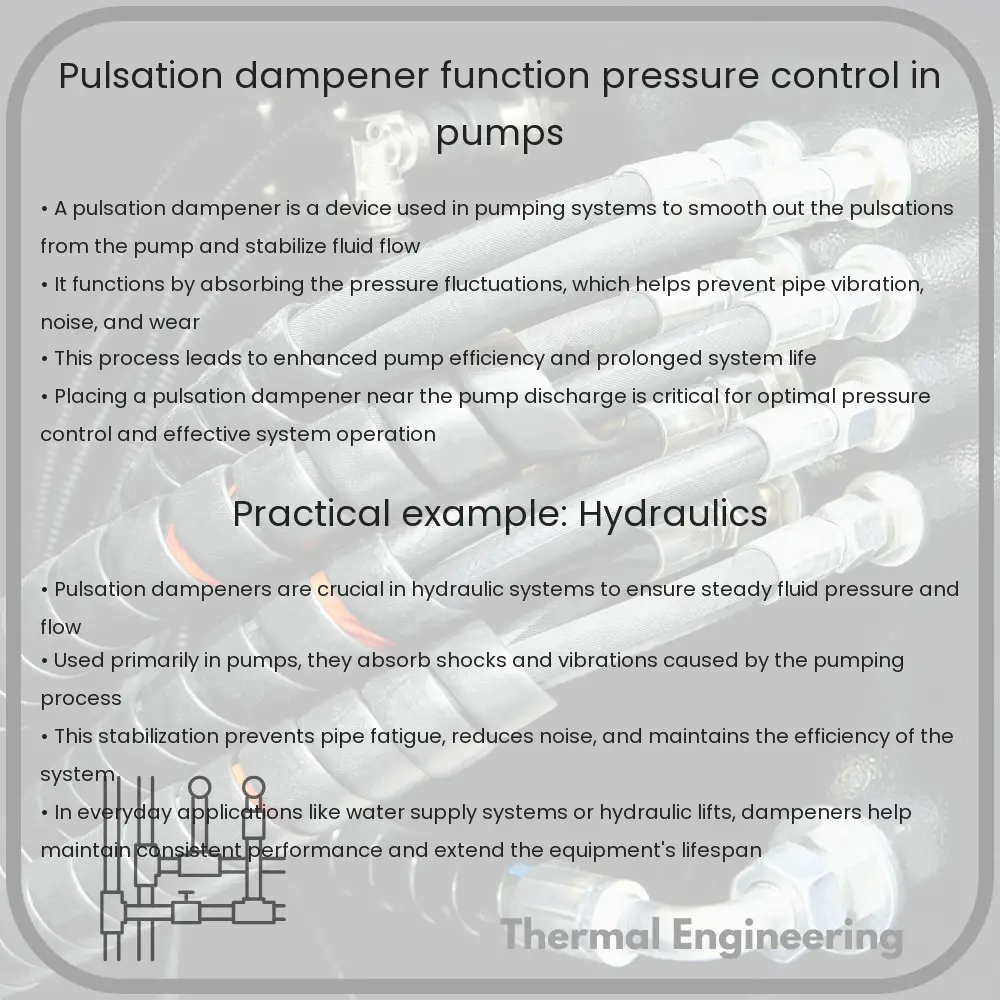Learn about the role and functionality of pulsation dampeners in controlling pressure fluctuations in hydraulic pumping systems.

Understanding Pulsation Dampeners: Their Role and Importance in Pressure Control in Pumps
Pulsation dampeners are critical components used in various pumping systems to ensure a smooth flow and to reduce fluctuations in pressure that occur during the pumping cycle. By understanding how pulsation dampeners function and their role in pressure control, both engineers and technicians can optimize the performance of hydraulic pumping systems and extend the life expectancy of their equipment.
What is a Pulsation Dampener?
A pulsation dampener is a device designed to absorb and mitigate the pulsations and vibrations in the hydraulic fluid flow generated by reciprocating pumps. These devices are crucial in maintaining the stability of the flow rate and pressure within pipelines, therefore protecting the system components from potential damage due to excessive vibrations and fluctuations.
How Does a Pulsation Dampener Work?
The principle operation of a pulsation dampener lies in its ability to adjust the pressure variations using either an air cushion or a diaphragm within its chamber. Here’s a breakdown of the working mechanism:
- When a pump pushes fluid through a pipe, it typically does so in distinct pulses, especially in reciprocating pumps like piston or plunger types.
- The pulsation dampener is installed proximate to the pump’s discharge point to intercept these pulses.
- Inside the dampener, a flexible diaphragm or bladder separates the hydraulic fluid from a pressurized gas chamber (usually filled with nitrogen).
- As pulses from the pump enter the dampener, the diaphragm flexes, absorbing the energy of the pulse and thereby smoothing out the flow on the other side.
This absorption and subsequent release of pressure waves help maintain a uniform flow rate and minimize pressure spikes and drops, leading to a more efficient system operation.
Benefits of Using Pulsation Dampeners
- Reduced Mechanical Stress: By dampening pulsations, these devices decrease the stress on pipeline and pump components, increasing their lifespan and reducing maintenance requirements.
- Improved Efficiency: Smoothing out the flow allows for consistent system operation and reduces energy consumption by avoiding pressure peaks that require additional power to overcome.
- Noise Reduction: Pulsation dampeners help in lowering noise levels produced by vibrations and pulsations, thereby contributing to a more pleasant working environment.
- Safety: Regular pulsations can lead to fatigue failures in pipe systems, potentially causing hazardous leaks. Dampeners mitigate these risks substantially.
Types of Pulsation Dampeners
Generally, there are two predominant types of pulsation dampeners:
- Diaphragm Dampeners: These employ a diaphragm to separate the fluid from the compressed gas (air or nitrogen). Adjustments can be made to the pressure of the gas to optimize performance.
- Bladder Dampeners: Similar in functionality, these use a bladder instead of a diaphragm, offering easier maintenance and replacement procedures.
Conclusion
Pulsation dampeners play a pivotal role in ensuring the operational integrity and efficiency of pumping systems. By effectively managing pressure fluctuations, they prevent wear and tear on system components, reduce operational costs, and maintain safety standards. For engineers and maintenance technicians, understanding and utilizing the correct type of pulsation dampener is essential for optimizing the performance of hydraulic systems.